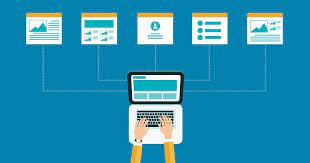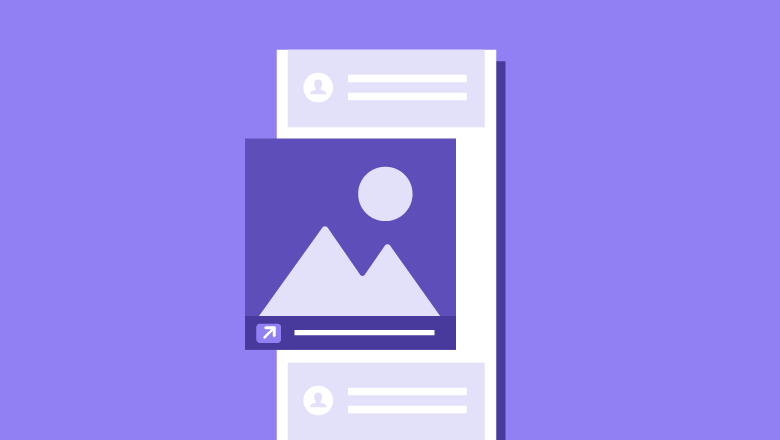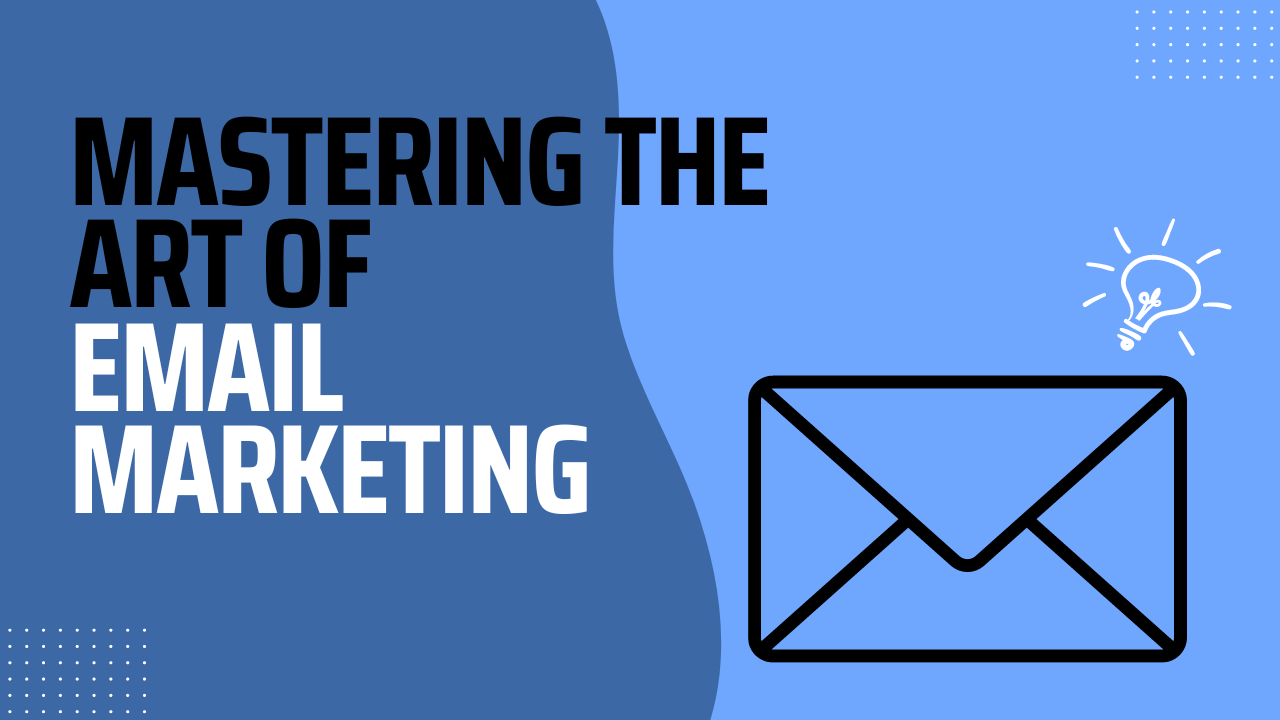Hello!
Marketers use a variety of channels to connect with their audiences, but one that’s especially impactful is email. Around 50% of marketing professionals who responded to a 2022 Statista survey said they had a two-time improvement rate in their email marketing return on investment (ROI).
Aside from having one of the highest ROIs, email communication feels more intimate, allowing you to get to know your recipients more deeply.
 However, fostering meaningful relationships and having good conversations through email is easier said than done.
However, fostering meaningful relationships and having good conversations through email is easier said than done.
It’s an intricate process that involves hyper-focusing on the quality of what you write, who you’re writing it to, and consistent distribution.
These techniques will help you effectively communicate with your readers and build genuine relationships through email outreach.
Everything starts with your audience
There’s no way to make a connection with someone if you don’t understand who they are and how they communicate. Effective communication and relationship-building through email starts with understanding who is on the receiving side of your emails and what they’re looking for in email content.
Who are you sending emails to?
Learning all that you can about the people you’re sending emails to before you hit “send” on any email is crucial. Without this approach, you end up sending generic emails that don’t resonate with anyone.
If you’re familiar with the person’s demographic background, email behaviors, content preferences, and pain points, you can craft emails that have a better chance of being opened and engaged with.
 For example, if you know a reader is enticed by visual content more, you could include a video or images in your email to inspire engagement. If you didn’t know this, you might rely solely on written content and be confused as to why the recipient isn’t responding.
For example, if you know a reader is enticed by visual content more, you could include a video or images in your email to inspire engagement. If you didn’t know this, you might rely solely on written content and be confused as to why the recipient isn’t responding.
Round up all of the data you have on your subscribers. This means social media analytics, behavior data from your website, audience personas, and any firsthand information you’ve received from those on your email list.
Note what the age range is, where they’re located, where they work, and any other demographic information. Get into their email behaviors next. Do they use email often? What are they currently subscribed to? What kind of content is pushed in those emails?
Then, move on to content preferences and behaviors.
Establish their email content preferences
Recipients may let a few emails that aren’t valuable to them slide. But if you continue to send them things they don’t care about, you’ll end up in their spam folder.
So, as you engage in the research above, establish email content preferences too. For example, do they respond most to long- or short-form content? What calls to action (CTAs) do they engage with? Do they like visual content? What makes them click on links?
When you pinpoint your readers’ content preferences, you can create what they want and almost guarantee engagement.
Compile your list organically
It’s so much easier to build real relationships with people via email when they’ve opted into this communication – essentially, opting into a relationship with you.
 Don’t force your email list on people. And don’t you dare think about buying an email list. Instead, build yours organically. You know who you’re trying to connect with.
Don’t force your email list on people. And don’t you dare think about buying an email list. Instead, build yours organically. You know who you’re trying to connect with.
Meet these people where they’re at, whether on social media or websites, and promote your email list signup. Talk about all the great things being on your email list provides. But don’t be pushy. Let people naturally gravitate to signing up.
People who came to you because they wanted to will be more likely to keep up communication with you through email and welcome building a relationship.
Set up your technology suite
Smart marketers have a host of tools they use to ensure communication with their audience is seamless and their content goes out consistently.
Artificial intelligence (AI) and automation tools, in particular, can positively impact businesses and how you communicate and connect with your email readers.
 For example, automated customer relationship management (CRM) software can collect, organize, and process recipient and customer data in a central system. Armed with this data, you can segment your email audience into smaller groups and create more personalized email campaigns.
For example, automated customer relationship management (CRM) software can collect, organize, and process recipient and customer data in a central system. Armed with this data, you can segment your email audience into smaller groups and create more personalized email campaigns.
You can also set the software up so emails are automatically sent to recipients based on the actions they take or don’t take.
As a result, you get your emails out faster and at the right time, helping you grow your relationships with recipients. Your productivity increases and you save time too.
Continue reading for three other tech tools to implement to streamline effective communication and relationship-building through email.
Email marketing platform
Effective email outreach requires much more than a public email platform like Yahoo or Gmail. Hopefully, you’re set up with an email marketing platform built for business email communications and strategies. If you aren’t, you need to take steps to acquire one today.
Your email marketing platform is the key to streamlined communication with your email audience. A good platform allows you to house everything email marketing-related in it, from recipient information to content templates to analytics.
 Automation and AI capabilities are built into the best platforms, too.
Automation and AI capabilities are built into the best platforms, too.
To choose the best email marketing platform, consider the functions you need to accommodate the number of people you have right now and the functions you’ll need as you scale your list.
For example, maybe you don’t need detailed analytics tools right now, but you will want them available when you hit a certain amount of subscribers. Or maybe you do all your email content creation on another platform, but eventually want to bring all of it to a single platform.
Determine what you want to do now with your email outreach strategy and what you want to do in the future.
And then, research email marketing platforms that have the specific features and functions you need to achieve your goals.
Data analytics tools
Your ability to communicate and build relationships via email will suffer without data analytics tools. The top two most effective email marketing campaign strategies are subscriber segmentation and message personalization, according to Hubspot research. You can’t carry either of these out without data.
Not only do you need to compile information about the people who read your emails, but you also need to know what’s working and what isn’t with your emails.
 Choosing tech and software that already have analytics tools built into them is your best bet.
Choosing tech and software that already have analytics tools built into them is your best bet.
For example, a top-tier customer relationship management (CRM) system will have built-in analytics tools that automatically collect data on your subscribers, organize, and extract meaningful insights from it.
But you also have the option to install third-party analytics tools to monitor the metrics you’ve attached to your email outreach strategy.
Cybersecurity
If you haven’t heard, data breaches are happening constantly and they can be devastating to a business, causing financial damages and a ruined reputation. Over 6 million data records were exposed in various data breaches worldwide in the first quarter of 2023 alone.
You don’t want your email marketing and audience data falling into the wrong hands. So, cybersecurity solutions are a must in your technology suite.
Make sure that whatever physical tech devices and software you use come with top-tier cybersecurity. This means anti-virus software, multi-factor authentication, a virtual private network, and network vulnerability scanners – for a start.
Work on the design and layout of your emails
 Believe it or not, your emails’ structure and visual appeal make a difference in inspiring communication and connection with the reader.
Believe it or not, your emails’ structure and visual appeal make a difference in inspiring communication and connection with the reader.
If they can navigate your email from top to bottom without interruption, they’ll be more likely to reply to your email, click links, or otherwise engage with it.
Let’s look at a few email design and layout considerations to make.
Email structure
How do your emails read from top to bottom? Is it easy to go from the subject line to the last sentence? Are readers able to focus on the message? Or are their eyes being pulled in a bunch of different directions because of clutter?
You should adopt a minimalist style with your email structure. For example, your headline would be at the top, then comes the body of your email, off to the right there might be an image, and at the end of your email your CTA.
A minimal email structure ensures readers can get through your emails, digest the content, and enjoy it.
Adding color
 There’s nothing wrong with a simple black-and-white color scheme for your emails. It’s encouraged, considering black words on a white background are easy to read and that’s ultimately what you want for recipients.
There’s nothing wrong with a simple black-and-white color scheme for your emails. It’s encouraged, considering black words on a white background are easy to read and that’s ultimately what you want for recipients.
But if you’re set on adding color to your emails to spruce them up, the key is ensuring that color doesn’t disrupt the email experience. For example, you could use a specific color for links so that they stand out while the rest of the words are black.
Alternatively, you could use different colors for sections of your email, like the following example from Casper, to help each section stand out.
For another option, you could include graphics that support the message you’re sending in your emails, like how the above screenshot uses the cloud, moon, and stars graphic to support the subject line.
A touch of color is OK, so long as it doesn’t interfere with understanding the email.
Consistency
No matter the layout and design elements you choose for your emails, they must be consistent across every email you send. Consistency builds trust. And with trust comes communication and willingness to build an authentic relationship.
 A consistent email design and layout lead readers to know what they can expect from you. Continuously meeting those expectations will let people know they can rely on you for good email conversations and content. They’ll be more inclined to keep opening and engaging with your emails because of it.
A consistent email design and layout lead readers to know what they can expect from you. Continuously meeting those expectations will let people know they can rely on you for good email conversations and content. They’ll be more inclined to keep opening and engaging with your emails because of it.
That doesn’t mean you should never mix things up just in case things get stale – but you shouldn’t send radically different designs every new email.
Create quality email content
What might be more important than your email’s design and layout is its content. If people open your emails and it isn’t anything they want to read, they’ll eventually stop opening your emails and may even mark you as spam.
So, you must create quality email content that your email audience wants every time.
Establish goals for every email
There should never be a time when you’re sending an email just because.
Every email must be intentional with a definitive goal attached to it.
 Examples of email goals include:
Examples of email goals include:
- Sharing a resource
- Driving traffic to another marketing channel
- Getting the reader to execute your CTA
- Introducing your brand and business offerings
- Getting clicks on the links in the emails
Having a goal for every email makes you more intentional in the content you write for that email. For example, let’s say the goal is to introduce your business offerings to a lead.
You’ll talk about those offerings throughout the email while also linking to your website’s product page to show what makes you unique. You might also end your email with a CTA that drives traffic to a specific product.
Establish goals for every email to ensure you’re crafting content with intention.
Craft an engaging subject line every time
 You can’t begin to build relationships with people via email if they never open your emails. That’s where an enticing subject line comes into play. An eye-catching subject line is often what convinces people to open an email. Here’s an example:
You can’t begin to build relationships with people via email if they never open your emails. That’s where an enticing subject line comes into play. An eye-catching subject line is often what convinces people to open an email. Here’s an example:
First and foremost, stay away from click-bait headlines. These are headlines that are attention-grabbing but have nothing to do with the content inside of the email.
You may get people to open your email but they won’t engage with it when they find out it’s not about what the subject line says. “Get free pizza” would be an email opener indeed, but if there’s nothing about pizza inside, people will probably sour on your brand.
Your subject line should be indicative of what the email is about. It should use power words, which are words and phrases that evoke a strong emotional response, like “earn more,” “exclusive,” “forbidden,” or “dazzling.”
Finally, ensure your subject lines aren’t too long. Draw your subscribers in with as few words as possible.
Keep it simple
 Speaking of few words, the body of your email should be simple and succinct. People who get your emails aren’t likely to get through them if they’re long and drawn out with huge paragraphs and no visuals.
Speaking of few words, the body of your email should be simple and succinct. People who get your emails aren’t likely to get through them if they’re long and drawn out with huge paragraphs and no visuals.
But they will if the email is short, easy to understand, and has a clear message. Keep every email simple and get your point across in as few words as possible.
Personalize your emails
It’s natural to want to send out a generic email to people, especially when you have a lot of emails to send out at a time. But unfortunately, this won’t get you the connection you’re looking for.
You must take the time to personalize your emails. People need to feel like you know what’s going on. They need to feel like whatever you’re sending them was specifically made for them and no one else. It makes them feel special. And that, in turn, inspires them to give you a chance.
Go beyond a first name when personalizing your emails. Incorporate details about their interests and what they’re trying to find a solution for.
 For example, let’s say you’re sending an email to someone for the first time to introduce yourself. Greet them by name first and then ask them a question about a problem you heard they were having with their company. If you can say a mutual connection brought it to your attention, even better.
For example, let’s say you’re sending an email to someone for the first time to introduce yourself. Greet them by name first and then ask them a question about a problem you heard they were having with their company. If you can say a mutual connection brought it to your attention, even better.
Personalization plays a significant role in opening up the lines of communication and establishing trust to grow the relationship.
Obviously, when you’re sending out thousands of emails to a full subscription list to announce a new product or service, you can’t customize each one. That makes it important to customize what you can, where you can.
Include reviews and testimonials
One of your main goals for your email outreach strategy is probably to grow your brand reputation and awareness. What better way to do that than to incorporate reviews, referrals, and testimonials into your emails?
You’re trying to grow your relationships with people on your email list. But again, you need to establish some credibility and trust in their eyes to make it happen.
Showing them genuine feedback from customers gives them a glimpse into your brand’s reputation. They’re more likely to believe real people sharing authentic accounts of their experiences than anything else.
So, use testimonials and reviews in emails where it’s appropriate. For instance, you could incorporate video reviews from social media in your emails about specific products. Alternatively, you could screenshot testimonials from your website and embed them in your emails.
Incorporate visual content
 There will be times when a simple email comprised of all written content is the best way to communicate with a recipient. However, incorporating visuals when it makes sense is important.
There will be times when a simple email comprised of all written content is the best way to communicate with a recipient. However, incorporating visuals when it makes sense is important.
As mentioned above, people are drawn to visual content. It takes less brainpower to absorb images than it does written content.
They’re prettier to look at too. Add visual content to break up written content and add flare to your emails.
Keep in mind that any visual content you use should support your written message. Even if you’re using a stock image, make sure it matches up with the message you’re relaying in your email.
Ensure it’s formatted correctly as well so that it loads and is displayed properly when the email is opened.
Timing Matters in Email Outreach
You could have the best email content in the world, but it won’t matter if you aren’t sending your emails at the right time. What the right time is depends on the people you’re sending your emails to.
For example, if your recipient works a 9-5, sending an email to them at 9 makes no sense. Sending it at 7 in the morning when they’re likely eating breakfast and checking emails is much better.
Also, pay attention to how often you send emails. One a day may be annoying to people, but two a week is easier to take in.
Refer to the research you did on your email audience above to figure out when you should send emails and how often.
Steps to Crafting Effective Email Outreach
You’re probably wondering what all this advice looks like together.
 Here’s a step-by-step linear guide to effective email outreach:
Here’s a step-by-step linear guide to effective email outreach:
- Your engaging subject line comes first at the top of your email.
- Greet the subscriber by name to start the email off.
- The first line should be a personalized question or statement (as much as possible given the volume you’re sending) that persuades the subscriber to read more.
- Move into the point of your email in the body.
- Use short paragraphs, no more than 4 of them.
- Add a graphic or color to enhance your email’s message.
- End your email with a CTA that tells subscribers what you want them to do next.
Mastering the art of email outreach is an ongoing project. However, that doesn’t mean you can’t fast-track effective communication and relationship-building through email. Use the tips above to guide you.
Also read:
- Apple Set to Disrupt the Market in 2027 with a “Product Renaissance”
- How Tech Can Help Your Research Company
- The Science and Use of Price Markups in Retail
Thank you!
Join us on social media!
See you!






